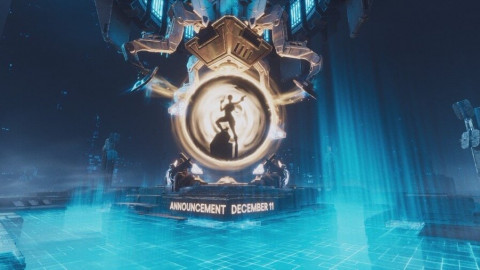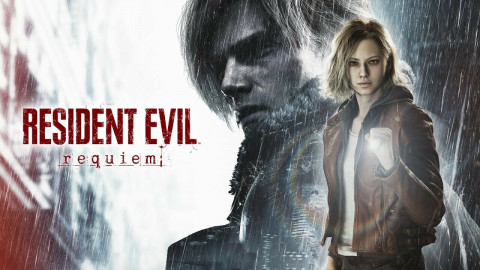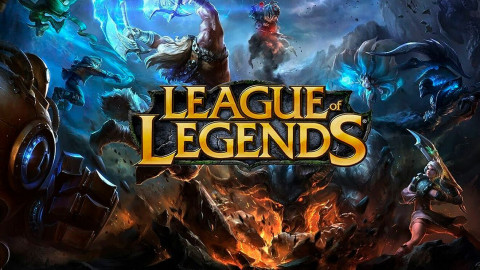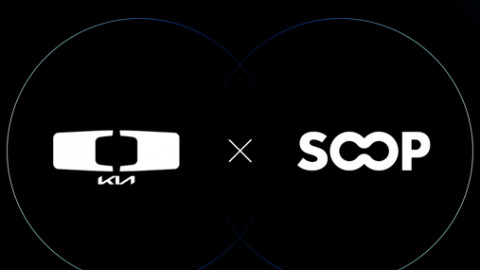Devil Rumble is a PvP content where players battle with their premade deck. The battle itself is not real-time PvP; opponents have automated movement, and many Childs specialized in preventing the other Childs’ actions often show up. This makes it difficult to guarantee victory with a deck you made for completing the Story dungeons.
Some players may be reluctant to play PvP, but the rewards are worth your time. PvP provides crystals and other resources and items every Monday morning to players who reached the threshold of each rank by participating in the Devil Rumble. You can actually get as many crystals as one package at the shop, which is great for those who want to summon additional Childs.
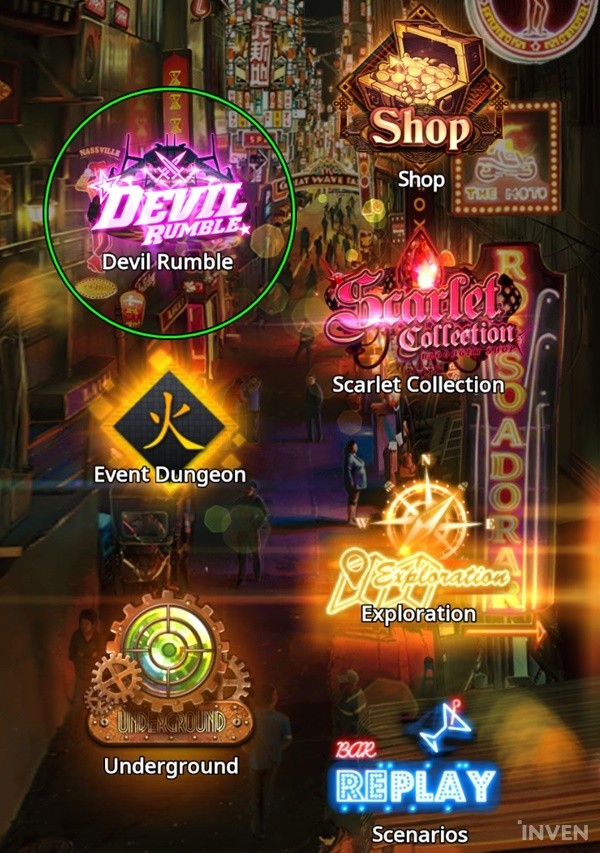
A Rumble ticket is needed to play - Lead your deck to victory and increase your ranked score
Devil Rumble is playable in the Night world. The system is 5v5, just like the Story dungeons, and the match is over when one side is annihilated.
You can find Devil Rumble on the top right of the screen, and players need a ticket to play. You can then check the deck of 5 opponents shown on the list and press Fight to begin the match. You can change your deck by pressing Edit on the top to go back to the page. The opponents are organized by strength, with the strongest at the top and weakest at the bottom. The Unknown, which is located on the top of the list, does not show its deck and combat power, and you can only check how strong the opponent is when you actually start the match.
The maximum number of tickets is 5 and is recharged every 30 minutes; you should spend a ticket every 30 minutes in order to participate in more matches. You can also spend a handful of crystals to recharge tickets, which cost 100 crystals per ticket.
If all 5 opponents on the list are too powerful, you can press Refresh on the bottom of the screen to reset the list. Rumble Coins are used to purchase various items at the Rumble Shop. The amount and type of rewards increase if you get multiple victories in a row.
It’s always better to directly control your deck if you’d like to secure the victory. This is because the opponent’s deck always uses automated actions. You can turn the tide of the battle by directly controlling your deck and aiming for the opponent’s weak spots, even if the enemy deck is more powerful.
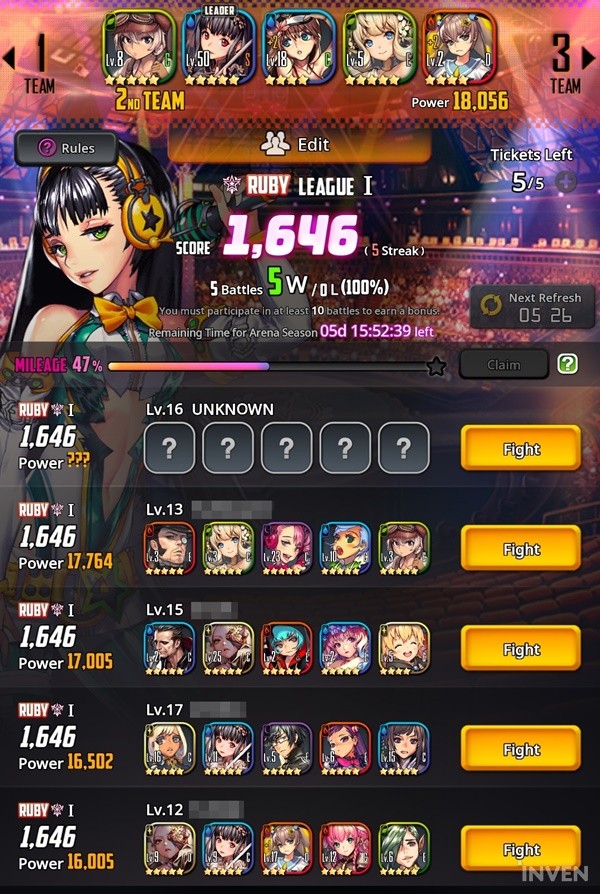


The higher the rank, the more rewards - Devil Rumble rank system and rewards
In Devil Rumble, you can earn league points upon winning a match. These points determine the player’s league and the player receives a corresponding reward of Crystals and Rumble Coins every Monday when the Rumble is reset.
You are assigned to the Rookie league when playing the Rumble for the first time, and the ladder goes Ruby, Bronze, Silver, Gold, and Platinum after that. The Ruby league is divided into three parts (1, 2, and 3) while there are 5 subdivisions from Bronze to Platinum. The Ruby League 1 which is the lowest of all starts from 1200 points, and you need more than 15200 league points to reach the Platinum League 5.
Of course, the higher you reach, the more and better rewards you receive. The Ruby League 1 gives 900 Crystals and 20,000 Rumble Coins, and the number goes up to 5300 Crystals and 280,000 Rumble Coins in Platinum League 5.
In addition, top-rank players receive extra rewards. The player in first place receives 15,000 Crystals, a 5-star Material Child, and 1.5 million Gold. The number then goes down to 3,000 Crystals, 4 3-star Material Childs, and 100,000 Gold for players from 56th to 100th. The rank rewards are separate incentives from the League rewards, so it’s much easier for top rankers to save up Crystals.
However, there’s one thing you should keep in mind about the League points. In order to claim the rewards, you need to participate in the Rumble at least 10 times every week. Although there’s no requirement to maintain the rank from Rookie to Bronze League 1, players from Bronze League 2 have a minimum required amount of matches and win rate. Failure to do meet those requirements results in up to 2 League demotions. For example, you need 100 games and an 84% win rate to maintain Platinum League 5, and you’ll need to reclimb the ladder from Platinum League 3 if you don’t meet these requirements.
You need to visit the Rumble Shop after saving up a handful of Rumble Coins. The shop sells a variety of items needed for Evolution, such as Crystals. You can also obtain a 5-star A-grade gear at a low chance. 4 items are displayed on the list which gets reset every 3 hours and you can refresh the list by paying 50 Crystals. You can increase the number of item slots on the list up to 12. It costs 10,000 Gold to open the first slot and the amount is doubled each time you open the next slot.

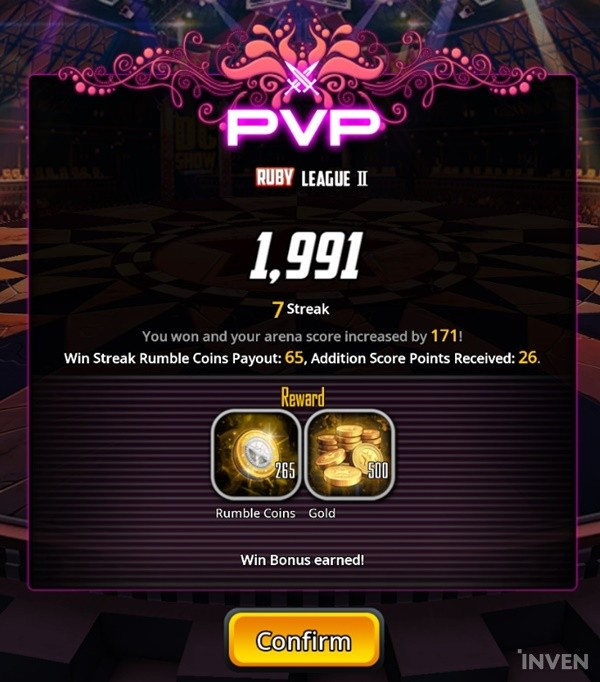
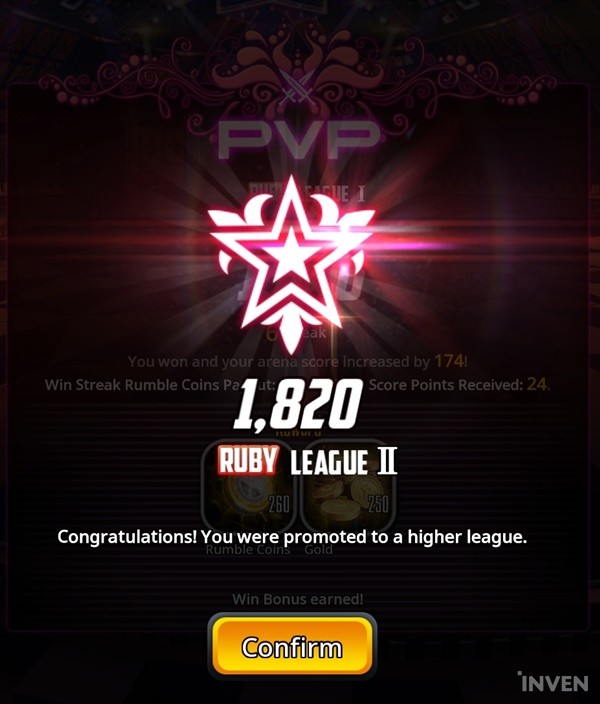
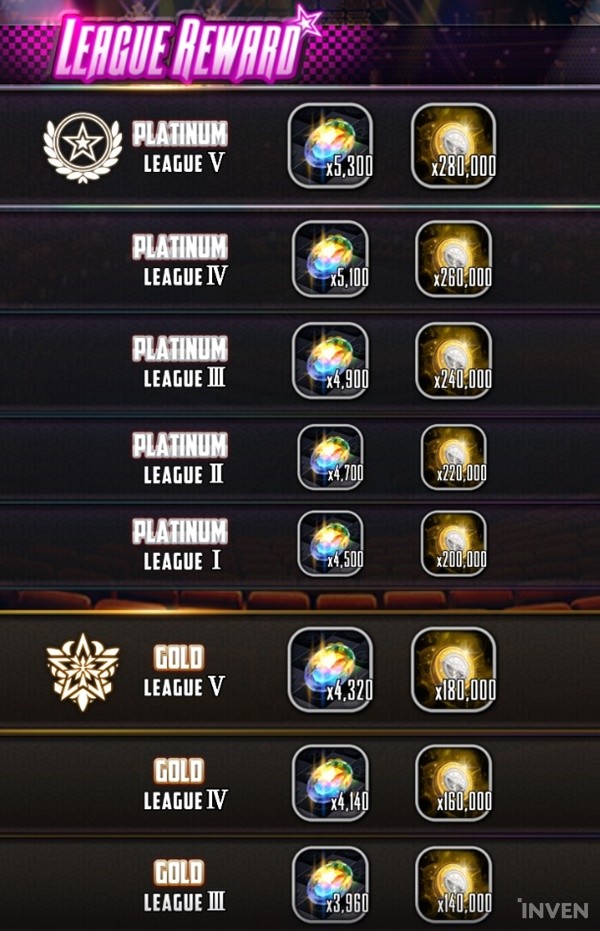

Who are the most suitable Childs for Devil Rumble?
Now’s we can take a look at how to actually win the fights. While the PvE content is usually based on decks with strong firepower, Devil Rumble battles are easier to win with decks that nullify enemy attacks and enhance the player’s firepower. Some Childs who are not that great in PvE content tend to deliver outstanding performances in PvP.
It is important that you understand the composition of the deck for Devil Rumble. Most Rumble decks basically have a speed Supporter, barrier Defender, Debuffer, and Attacker. The remaining spot is filled with either an additional Attacker, Debuffer, or Healer.
Childs in the opponent’s deck are not scaled up like enemies in the Final Chapter Hard Mode since they are player-made decks. This is why you need to balance the deck composition with all available classes to not only attack the enemy deck but also prevent their attacks and protect your Childs at the same time.
The use of Debuffers is slightly different than in PvE. Many Debuffers in PvE usually support Attackers by dealing extra damage such as inflicting bleed and/or reducing the target’s armor, but Debuffers in Devil Rumble are more focused on interfering with the enemies by decreasing the Skill Gauge Recharge Speed and/or inflicting CC.

Attackers with debuff skills are often used in Devil Rumble. Some examples are Eve and Mafdet.
Water-elemental Attackers like Eve are specialized in dealing DoT and can also interrupt Fever. The most popular Child is Eve, a 5-star Child, but Elysion is also a viable choice if you don’t have Eve yet.
Mafdet can deal damage to 3 enemies with the lowest HP and also interrupts the enemy’s healing effects, aside from lifesteal. This is the best counter to Syrinx, who is one of the most popular Childs for Devil Rumble. The effect is still exceptional against Healer-oriented decks.

Olga, Lan Fei, and Nirrti are the most commonly-used Debuffers in Devil Rumble. Olga is specialized in decreasing the Skill Gauge Recharge Speed. Unlike Chang’e who provides the Skill Gauge Recharge Amount increase buff, Olga decreases the Skill Gauge Recharge Speed of the whole enemy team, which is more efficient. Her Normal and Drive decreases the Recharge Speed and the Slide silences the opponent; all of her skills are ideal for preventing the enemies from attacking.
Lan Fei decreases the opponent’s attack damage and Drive gauge. Although her Leader Buff decreases only the light-elemental attack damage and is thus rather inefficient, her Normal decreases the target’s attack damage, while Slide and Drive decrease the opponent’s Drive Gauge. This allows her to have Fever without much difficulty. The Slide also deals a two-hit attack while disregarding the opponent’s defense, surpassing any other Debuffer Childs in terms of damage.
Nirrti removes the opponent’s buff and leads them to their demise with Chaos. The Normal removes buffs and weakens the enemy’s combat potential, and the Slide confuses 2 enemies with the highest attack damage and makes them attack their own team. It may not be as efficient against bots as they just stop moving when confused, but the effect is extremely good when other players fight against your deck.

Dana is the only 1-tier Defender in Devil Rumble and she can be seen in almost every deck that rankers use.
This is because Dana delivers outstanding performance by providing a barrier which is much better than defense buffs. Not only does the barrier prevent the ally Childs from losing HP, but it also increases the defense stat. The overall stability becomes much better as her barrier is activated on all 5 Childs of the deck.
Hades can be a good alternative with damage reflection and taunt if you don’t have Dana. Hades has a high chance to take damage aimed at ally Childs and can even reflect a portion of damage when he’s taunting the attacker. However, it’s not always guaranteed that he taunts the target, there’s a considerably big skill cooldown which makes him relatively useless, and his skills don’t mitigate damage like a barrier would, so he’s still rated below Dana.
Mars can also be used instead of Dana but is not as preferred. Mars also provides a barrier for the whole team but it doesn’t increase the defense stat like Dana’s.


Supporters with a speed buff are generally used, and one more Supporter can be used to back up the firepower of Attackers if you don’t have suitable Debuffers.
Chang’e shows up frequently in Devil Rumble along with Dana as a Supporter. Her outstanding speed skill increases the number of skills used in a given time. Her Drive inflicts Stun, one of the best CC in the game. It is extremely important to attack the target first and inflict any available CC in order to get rid of at least one enemy Child as quickly as possible. For this reason, Chang’e is favored by many Rumble players.
Mayahuel or Quirinus can be good alternatives to Chang’e to increase Speed. However, Devil Rumble usually requires you to play with 5-star Childs the general stats of 4-star Childs are obviously lower than 5-star’s, thus they are not used that often as they can be killed almost instantly.
Naias sometimes shows up on the stage due to the skill that increases the ally team’s speed. Her Normal targets 1 random Child, and her Slide does not increase the Gauge Recharge Speed nor the amount, but reduces the cooldown by 1 second, so her potential is considered somewhat lower than others. The Slide, however, decreases the amount of Skill Gauge which can be good for both increasing the speed and preventing attacks, so she’s sometimes used along with Chang’e.


Syrinx, Maat, and Metis are good Healers in Devil Rumble. Syrinx is the most-picked Child along with Dana and Chang’e for Devil Rumble, thanks to Fortitude with all of her skills. Fortitude completely nullifies the incoming physical damage which works magnificently against a physical damage deck.
However, Syrinx is focused on regenerating Hp over time and providing Fortitude to the ally team and this is not good against Mafdet, who interrupts HoT (healing over time). Fortitude does not nullify DoTs such as bleed and poison, especially when they deal more damage than the amount of Syrinx’s HoT.
Maat is less stable compared to Syrinx. The healing capability itself may be excellent as she can heal all 5 Childs at once, but the skills do not have Fortitude like Syrinx. She is still favored, however, because of her Drive that revives a fallen Child. This may act as a game changer when used at the right timing.
Metis is used solely because of her Immortal effect. Although her healing skills are not as strong as the other Childs mentioned before, her Slide activates the Immortal effect which prevents any Child who received a buff from dying for a certain amount of time. The downside is that the one who received the skill becomes stunned for 5 seconds after the effect, thus it must be used only when the victory is certain.

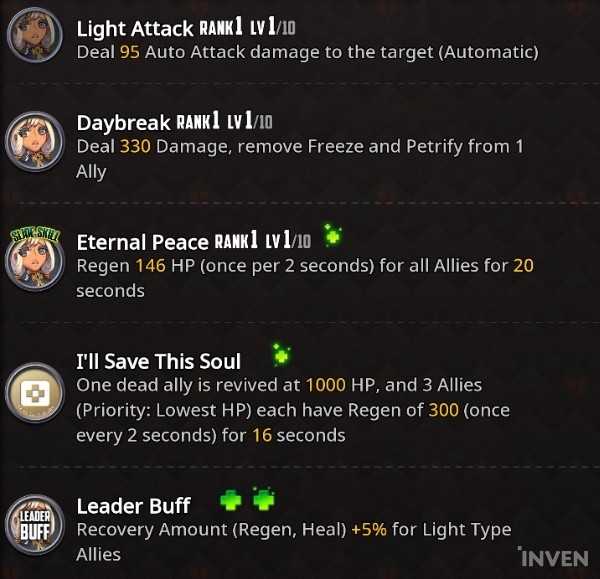

More to read about Destiny Child: The Devil's Festival with the Biggest Rewards: What is the Ragna Break and How to Prepare for it
Sort by:
Comments :0



